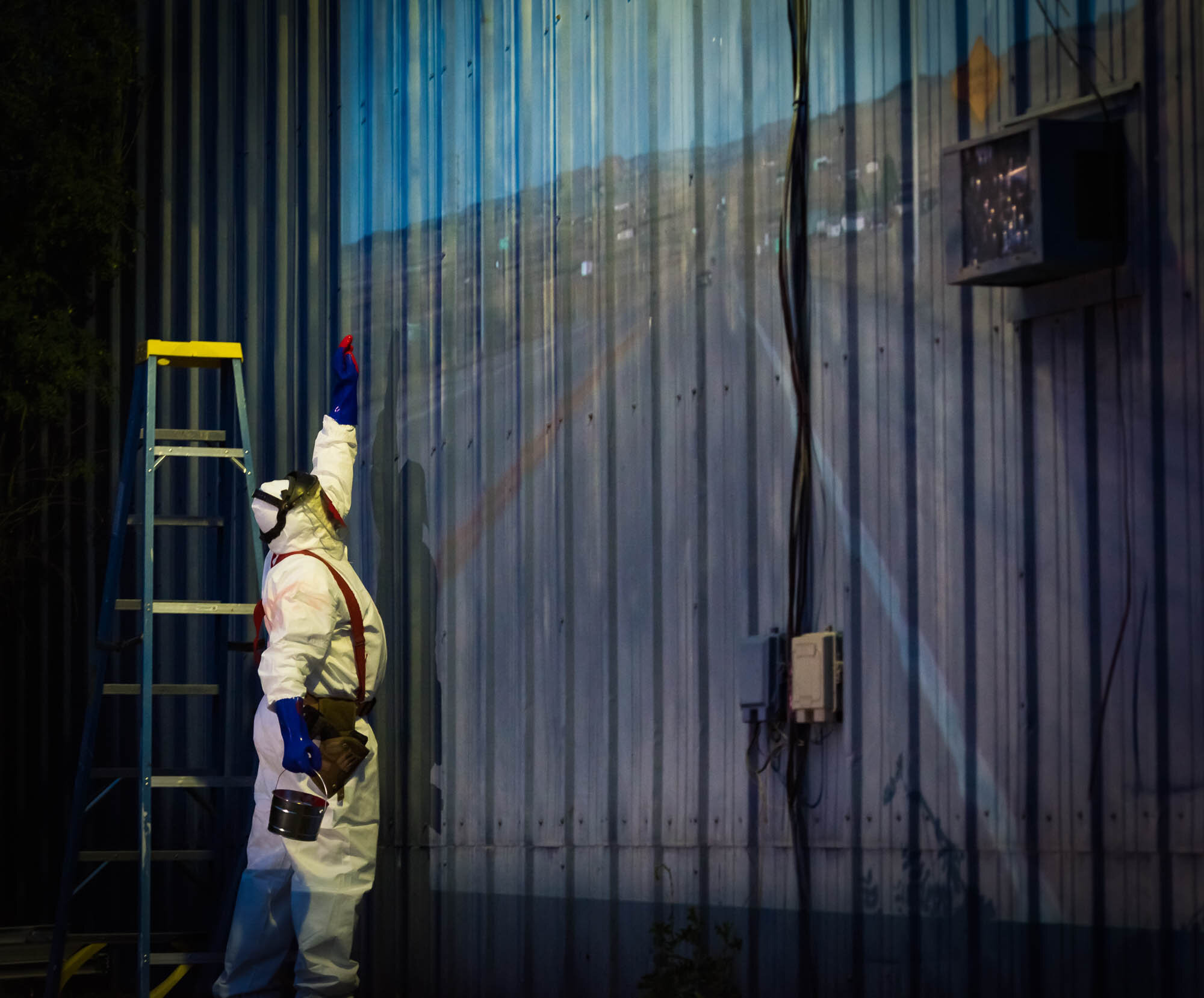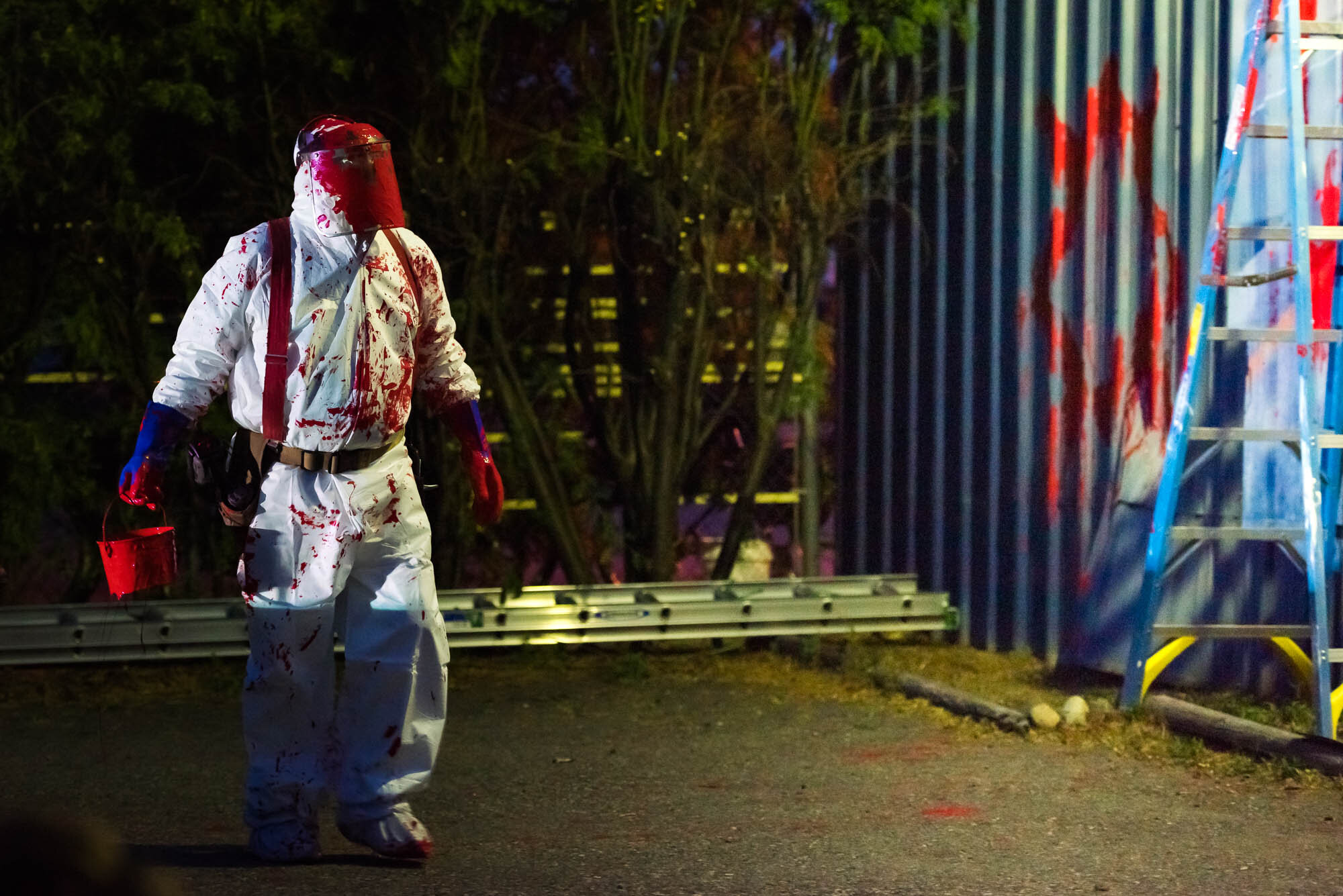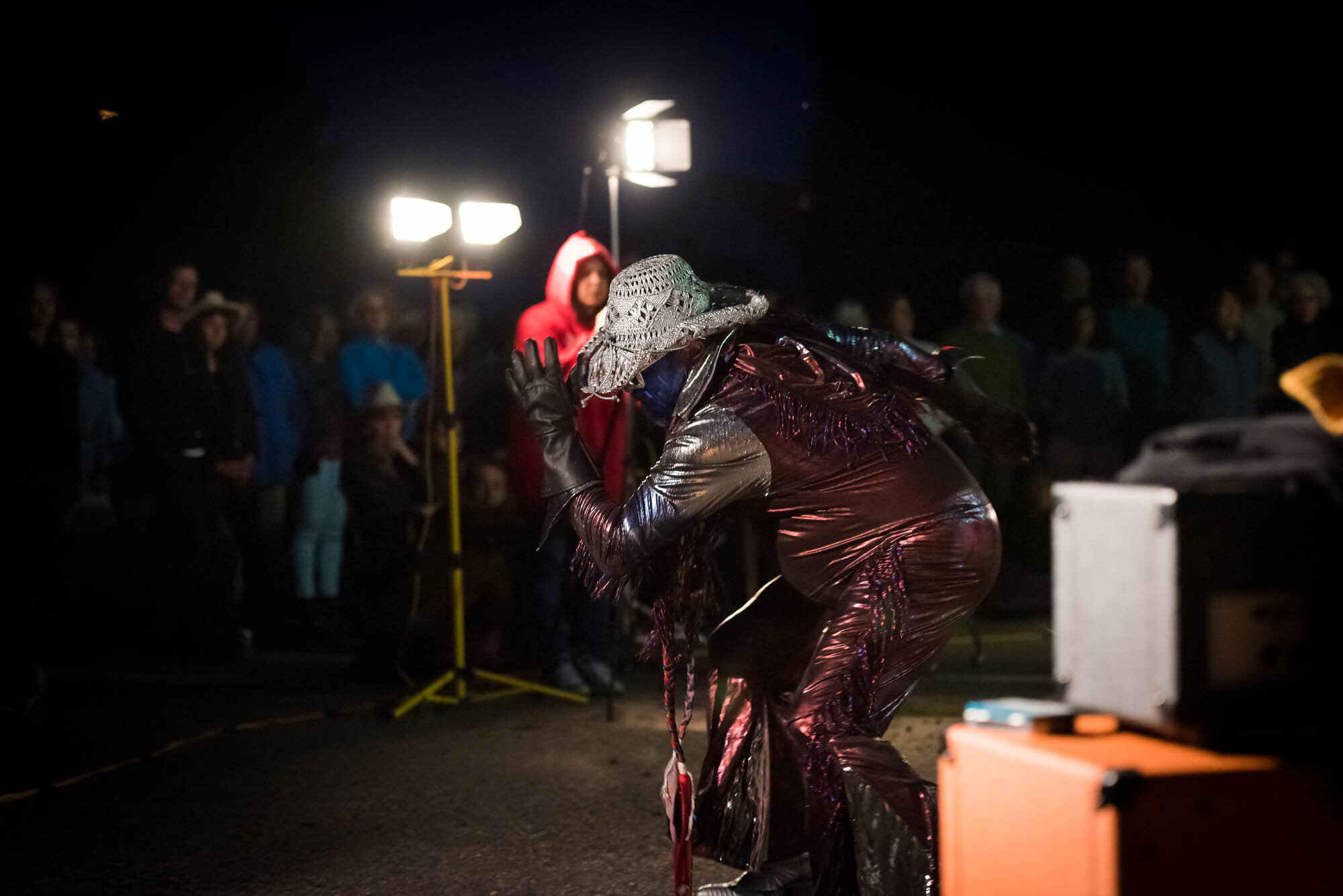TINWORKS ART 2019
A video overview of Tinworks Art 2019.
Tinworks Art is bringing together artists from across the Bozeman community and beyond to create site-specific works of art that reimagine the possibilities and identities that an empty building contains. Through the efforts of these nationally-renowned visual and performing artists, the old Tinworks warehouse will be transformed into a dynamic space where visitors will experience art in new and unexpected ways.
Tinworks Art will feature four visual artists, two performing artists, and a series of community-led conversations. Visual artists include: nationally-renowned Montana artists Deborah Butterfield and John Buck; accomplished visual and performance artist Adam Frelin; and, Bay Area artist Chris Fraser who draws his inspiration from historic image-making technologies. Performance artists include: two-time Grammy-winning choir, The Crossing, featuring local choral group, the Aoide Chamber Singers; and, native artist Bently Spang who draws inspiration from his experience as a contemporary Tsistsistas/Suhtaio. The Northeast Neighborhood Association of Bozeman will also be leading a series of conversations inspired by their PhotoVoicesNE project - a project that will curate photos from the community to give voice to the neighborhood and its character. To learn more about these inspirational artists and the installations they have planned for Tinworks Art, visit www.tinworksart.org .
Tinworks Art is located at 719 N. Ida Avenue in Bozeman, MT and will open to the public every Friday from 3PM - 6PM and every Saturday 10AM - 6PM from Friday, July 12 through Saturday, August 17, 2019. Private group tours can be arranged at other times by contacting info@tinworksart.org . Admissions to the exhibition is free and all are welcome. For more information about the schedule of events for Tinworks Art, visit www.tinworksart.org.
This is made possible with support from the following sponsors: North Fork Builders, The Lark Hotel, and Story Street Studio.
Curated by Eli Ridgway.
Cat’s Cradle
by John Buck
jelutong wood, leather, and motor
132 x 289 x 106 inches
“My recent work is an extension of previous figurative work that has included an implied movement through the dynamics of form. This sculpture, Cat’s Cradle, explores mechanical movement through the use of motors, pulleys, and belts. My interests in primitive, ethnic, and historical woodcarvings combined with my explorations of modernism and contemporary art is the basis of my compositions.”
Based in Bozeman, MT, John Buck has been a professional artist for over 46 years and has exhibited extensively throughout the United States. He is both a sculptor and a printmaker. He works with two interrelated bodies of work in 2D and 3D. His primary medium is in carved wood assemblage, which is sometimes cast as bronze sculptures or is also sometimes engineered as kinetic works. His multicolored woodblock prints are carved in wood and printed on large sheets of rice paper.
Billings
by Deborah Butterfield
found steel, welded
87 x 102 x 32 inches
“The first time I saw a horse—I don’t think I could talk yet—it filled my eyes and my heart, and spoke to me without language. I have tried to explain this, but words fail me. I hope that by standing next to my work you can feel the calm I feel around horses, the power and order through your skin and in your belly.
The horse has been my focus and artistic practice for more than 40 years; my conversation with horses has lasted just as long. Vicki Hearne in Animal Happiness states, “There are people who describe training as a process of discussing with animals the attributes of God, a discussion in which the human listens as much as she talks.” I find the progressive training of a horse so similar to studio work: There are questions, struggles, repetition, and hopefully resolution and satisfaction. Hearne also said, “I never encountered a horse in whose soul there was no harmony to call on.”
I have used different materials in my work to invoke different states of being, both physical and mental. Steel, copper, lead, bronze, driftwood, hardwood, burned wood—all have different character, strengths and weaknesses, and line quality. Finding my way with various materials in the studio is like dealing with different personalities. I love the variety and expressiveness of different materials and horses, and hope that my work transmits this joy.”
Billings, 1996 by Deborah Butterfield at Tinworks Art 2019 in Bozeman, MT.
The Arc in the Sky
by the Crossing
conducted by Donald Nally
Presented in partnership with the Aoide Chamber Singers and Warren Miller Performing Arts Center, the two-time Grammy-winning choir, The Crossing performed Kile Smith’s The Arc in the Sky at Tinworks Art on Saturday, July 27, 2019.
“It seems to me to be the perfect piece to bring to this transitioning place, to remind us that our history is not in buildings or even in plots of land that humans imagine we can 'own'; it is always in the lives lived by the people, and the animals, and the plants that have graced this piece of earth.”
— Donald Nally, Conductor
Kile Smith’s The Arc in the Sky was commissioned by The Crossing and premiered in June 2018 at the Presbyterian Church of Chestnut Hill in Philadelphia. A concert-length work written for unaccompanied choir, The Arc in the Sky sets texts by the enigmatic Robert Lax. “As soon as I read Lax, I knew I wanted to set his words to music,” writes composer Kile Smith. “The ecstasy of being carried along is what I wanted to capture, the feeling not so much of a performance, or of listening to a performance, but of performers and listeners together being caught up in something bigger than them all.”
ASTERISMS
BY CHRIS FRASER
“This project is inspired by the Renaissance practice of retrofitting large cathedrals with pinholes, effectively transforming sacred spaces into gigantic solar observatories and reliable timekeepers. During the 15th and 16th centuries, the Catholic church was committed to reforming the solar calendar due to uncertainty about when to celebrate Easter. At a time when Galileo was under house arrest for saying the earth revolved around the sun, this led to a strange alliance between theologians and astronomers and resulted in our present secular calendar.
The installation calls attention to the specific transit of the sun over Bozeman, MT, through the creation of a large, multi-pinhole camera obscura designed for the site and season. Visitors watch the sun pass overhead by looking at the patterned projection of disks covering the floor, walls, and themselves. The projection resembles a star chart. But rather than looking up into the night sky at a multitude of stars, visitors look down at an image of one star, our sun, repeated several thousand times.
The pattern of the projection is fluid – changing with the time of day, as disks gather on the west wall at sunrise, fall across the expanse of the floor at solar noon, and congregate on the east wall at sunset; changing day to day, as the sun dips lower into the sky, pushing the projection further into the room and increasing the size of the disks and the degree to which they overlap. The project creates a space for exploration and quiet contemplation, immersing visitors in an experience of time marked not by numbers but an attention to place.”
— Chris Fraser
In Praise of Shadow
by Adam Frelin
two wax candles
20 x 30 x 30 inches each
“For reasons that are not clear to me, no one has ever created a very large candle. Not for a temple, castle, or church. Not for an emperor, sultan, or king. While the technological means to make them has been available since the Bronze Age, I have found no reference to their existence in my year’s worth of research. In Praise of Shadows is a project that aims to correct this historical omission.
In Praise of Shadows is a project that involves creating very large candles. At 10 times the size of a normal pillar candle, they are proportionally scaled to burn exactly like a waist-high version of their smaller counterparts. The title for the project is taken from a book of the same name written by Junichiro Tanizaki in 1933. In it, he praises the quality of candlelight on Japanese art and architecture, advocating for shadow and subtlety over light and clarity.”
— Adam Frelin
PhotoVoicesNE
by the Northeast Neighborhood Association
Our neighborhood deserves us to be active participants in its evolving future. PhotoVoicesNE is an opportunity for northeast neighbors to show and tell and gather to share what we value, love, and want to preserve about our neighborhood. PhotoVoicesNE is a Northeast Neighborhood Association (NENA) community art project and an act of democracy. Neighbors will submit photos—along with a sentence or two of text to provide a ‘voice’ to the image—and then we will gather at the Tinworks Art event August 9th and 10th for a community conversation.
Visitors will be invited to share their thoughts by writing on the ‘gallery’ walls, causing the exhibit to change over time with the addition of new ‘voices.’ Toward the end of the exhibition the entire neighborhood will be invited to a gathering in the space, where we will engage with each other about the images, the neighborhood, and the concept of change.
We want to ensure that the Northeast Neighborhood continues to be a place where people want to live, work, visit, and patronize. The end goal will be the creation of a document defining the character of our neighborhood. The document will be presented to the City to inform the creation of neighborhood character design standards and guidelines within the Neighborhood Conservation Overlay District (NCOD).
STRATUM RESET
BY BENTLY SPANG
In this soon-to-be demolished space, Bently Spang presents a new performance work that flips the persistent myth of ‘The West’ on its ear revealing the even more persistent layer of Native existence that never left this place. Accompanied by a soundscape work created by his son Troy Spang, an accomplished musician, he creates a contemporary cairn of sorts, a marker, to reset the understanding of this place on the earth as it moves into the next stage and remind the viewer of the true complexity of place.
The Gallatin Valley is historically a place of gathering for many Native nations, providing sustenance for us on many levels. The confluence of the 3 rivers that form the Missouri headwaters in this valley attracted tribes who all agreed to lay down their weapons so that all could benefit from the resources in this area. And, our continued presence here is evidence of the power of our cultures and I want to celebrate that power and our convergence with different cultures here in this place of convergence where rivers, food, and life all come together. I want to unearth our layers of the past on this land, decolonize those layers as best we can through an art action, and combine it with today’s layer. This can potentially embolden and strengthen us as Native peoples and, at the same time, provide deeper insights into our uninterrupted existence for the non-Native community.
This performance at Tinworks Art is a chance to help restore this often overlooked layer of Native history in this place of power for many Native peoples and connect it to the uninterrupted continuum of Native existence that I and other living Native peoples have always been a part of. And, to do so in a cross-cultural action that celebrates the power of culture and creates the potential for resolution and moving into the future in a new and more culturally unified way.
— Bently Spang









